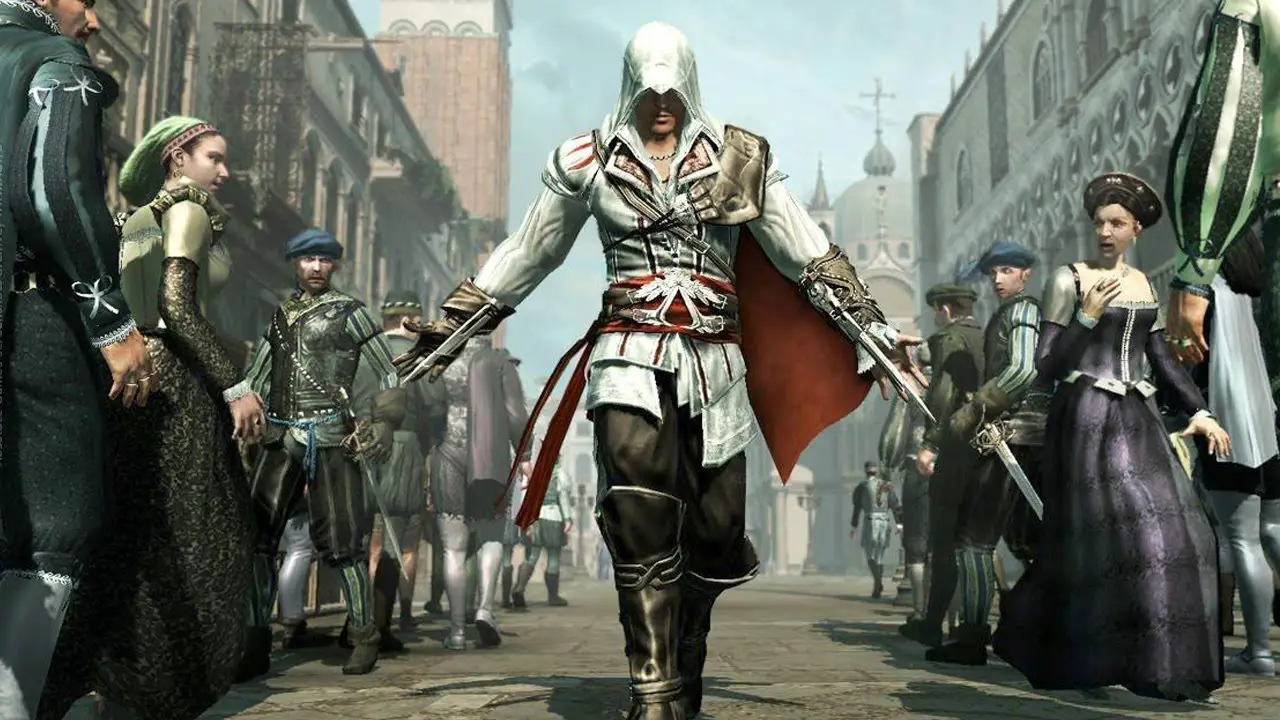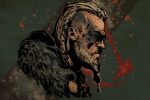Nothing is true, everything is permitted: That’s the maxim for the “Assassin’s Creed” games, though now it seems to apply to the entire franchise in the worst of ways. Recent news concerning the upcoming installment in the series, “Assassin’s Creed: Odyssey,” confirms that not only will one of the two playable characters be non-canon (meaning they technically don’t exist in the game’s universe), but the ending to the game is not even in the game — it’s in a book.
How exactly long-time “AC” fans got to this point is unclear. Sure, Ubisoft fired the creator of the series years ago, and one of the main scriptwriters left the company a few years after. The modern-day story also wasn’t every fan’s cup of tea, but it’s uncertain the influence those factors had on the franchise’s new direction post-“Assassin’s Creed 3.”
Maybe Ubisoft just likes money and takes the series in the most profitable direction it can think of. Whatever the reason, the “AC” series has clearly forgotten its original identity — a bold claim to make, but not a baseless one. Turn the clock back a few years and remember what “Assassin’s Creed” was, so you can truly comprehend how different it is today.
An Uneven, But Solid, Start
The first entry in the “AC” series hasn’t aged well and wasn’t anything to write home about when it first came out either. Much of the game involved sitting on benches to eavesdrop and trailing people to pick their pockets to gain information on your target’s whereabouts and fortifications.
Not terribly exciting, and even the more exciting bits boiled down to choosing to stealth kill your target and booking it out of there, or just go in guns-a-blazing (or, more accurately, “swords-a-swinging”) and kill a mini-army before reaching your target. Still, the unique experience of the game had its charm. For starters, the game took place during the Third Crusade, and while it obviously took liberties on how some events went down, the map accurately represented the cities that existed at the time, adding a nice level of immersion.
This game introduced the now-iconic hidden blade, along with the equally memorable hood, viewpoints and, of course, jumping into haystacks. Not to mention the targets assigned to the player belong to the Order of Templars, introducing the long-going rivalry between the Assassins and the Templars that forms much of the franchise’s narratives.
On top of all this, there’s the entire premise of why you played as an Assassin during the Crusade in the first place: In-game, the player actually controlled bartender Desmond Miles, who was kidnapped by a company called Abstergo (the Templars in the modern world). They wanted Desmond for his DNA, so they could use a machine called the Animus to unlock the memories of his ancestors, one of whom is Altaïr Ibn-La’Ahad, the Assassin you play as.
It was a bit out there, for sure, but Abstergo, the Animus and the war between Templars and Assassins would be the elements that tied future releases together. That, and one other aspect of the story only hinted at in the first game before being fully introduced in “Assassin’s Creed 2.”
Meet Your Maker
Some fans consider “Assassin’s Creed 2” the best game in the series, and it’s certainly a true highpoint. It vastly improved upon its predecessor in terms of both gameplay and story, and traversing Renaissance Italy is truly amazing. The game also introduced another layer to the story, one that deepened the feud between the Order and the Creed.

In the game, Ezio, the Italian Assassin and the ancestor Desmond was learning about through the animus, searches for Codex pages scattered across Italy (and written by none other than Altaïr). Once he collects all the pages, they reveal a coming “prophet” who will open the “Vault” by using two Pieces of Eden. Players saw a Piece at the end of the first game, and they can learn a lot about the usage of the Pieces throughout human history by finding and deciphering glyphs found in “AC2.”
At the end of the game, Ezio discovers the location of the vault and realizes he is the prophet, and when holds the Pieces in his hands, the Vault opens. Inside stands a hologram of a woman named Minerva who claims to have a message for Desmond — who wouldn’t be alive until hundreds of years after Ezio receives it.
Minerva reveals that she belonged to an advanced society that came to live on Earth, and when her people found out a disaster threatened to wipe out the planet, they created humans as a workforce to help avert the disaster. The humans rebelled and fought their creators, but eventually the disaster killed off most of life on the planet. Survivors from each group then worked together to start anew before the advanced race sealed themselves off in Vaults to prepare and prevent a future disaster.
So, yeah, aliens get involved, and the next three games run with this plot line to some extent, with the fifth game in the series (but the third in the trilogy) concluding this and Desmond’s stories. The creator plot was far from over, but Desmond did meet his end — and so did the Assassin’s Creed series as we knew it.
Riding the Wave
“Assassin’s Creed 3” received lukewarm reviews from fans, with the universal highlight being the naval combat the game introduced to the series. Additionally, there had always been talk on online forums that the modern-day story wasn’t needed and that people would prefer to not be taken away from climbing buildings and stabbing people every few hours for a story they couldn’t care less about.
It appears as though Ubisoft took all of this into consideration when making their next installment, “Assassin’s Creed 4: Black Flag,” which garnered extremely positive acclaim for basically being a pirate game — even the tutorial writes off your Assassin training as skills a pirate can pick up on their first attempt. The land missions occur in the traditional “Assassin’s Creed” style, featuring plenty of eavesdrop missions and hiding in haystacks, but the game is really played out on the open seas and might as well be an entirely different IP.
As for the modern-day story, you play yourself as an employee of Abstergo, exploring the life of Edward Kenway for official entertainment purposes and unofficial Templar business. Other than that, and a cutscene at the end of the game, the modern-day story is non-existent and practically goes nowhere. This is the formula that the future releases would follow: add in some new gimmicks (“Unity” had co-op, “Syndicate” had two playable protagonists and “Origins” is basically an RPG) and spin the wheels of the modern story just enough to create a thin thread that connects these games.
The fact that “Odyssey” takes place before “Origins” means any connection to the Assassins will be minuscule, and doubling down on the RPG elements “Origins” introduced takes the game further from its roots. And now it’s confirmed that the story the player experiences won’t even matter — the new identity of “Assassin’s Creed” is whatever it needs to be sell, and that’s truly a shame.

















